Themed collection Capacitive deionisation and electrosorption 2020

Capacitive deionization and electrosorption: from desalination to ion management
Guest editors Peng Liang, Zhiyong Jason Ren and Xia Huang introduce the “Capacitive deionization and electrosorption” themed issue of Environmental Science: Water Research & Technology.
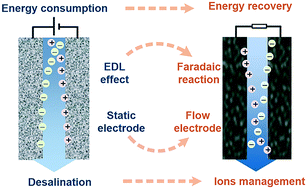
Environ. Sci.: Water Res. Technol., 2020,6, 241-242
https://doi.org/10.1039/D0EW90004D
Capacitive deionization and electrosorption for heavy metal removal
Electrosorption and capacitive deionization technologies can be effective processes in removing heavy metal for water purification, wastewater treatment, resource recovery, and environmental remediation.
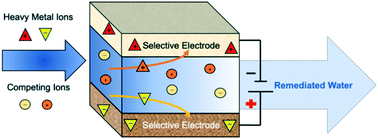
Environ. Sci.: Water Res. Technol., 2020,6, 258-282
https://doi.org/10.1039/C9EW00945K
Selective ion separation by capacitive deionization (CDI) based technologies: a state-of-the-art review
Selective ion extraction from aqueous solution is of great significance for water purification as well as resource recovery.
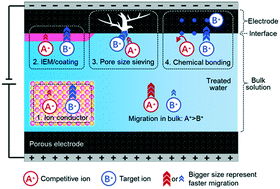
Environ. Sci.: Water Res. Technol., 2020,6, 243-257
https://doi.org/10.1039/C9EW00835G
The feasibility of hollow echinus-like NiCo2O4 nanocrystals for hybrid capacitive deionization
The hollowed echinus-like NiCo2O4 nanocrystal with excellent electrochemical behaviour has been demonstrated as high-performance cathode for hybrid capacitive deionization.

Environ. Sci.: Water Res. Technol., 2020,6, 283-289
https://doi.org/10.1039/C9EW00939F
Pilot-scale demonstration of an electrochemical system for lithium recovery from the desalination concentrate
Design and demonstration of a pilot-scale electrochemical lithium recovery system for the treatment of actual desalination concentrate.
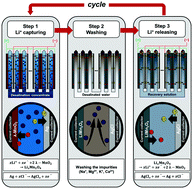
Environ. Sci.: Water Res. Technol., 2020,6, 290-295
https://doi.org/10.1039/C9EW00756C
Understanding resistances in capacitive deionization devices
The desalination characteristics of capacitive deionization (CDI) are significantly impacted by the cell resistance.
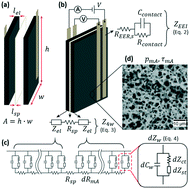
Environ. Sci.: Water Res. Technol., 2020,6, 1842-1854
https://doi.org/10.1039/D0EW00169D
Asymmetric configuration of pseudocapacitive composite and rGO electrodes for enhanced capacitive deionization
Three different asymmetric electrode configurations were set up in CDI experiments. Each electrode pair's performance on salt adsorption capacity and average salt adsorption rate was investigated and compared.
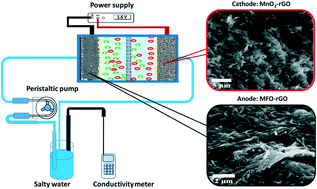
Environ. Sci.: Water Res. Technol., 2020,6, 392-403
https://doi.org/10.1039/C9EW01033E
Nutrient recovery from treated wastewater by a hybrid electrochemical sequence integrating bipolar membrane electrodialysis and membrane capacitive deionization
A hybrid electrochemical treatment train enables the sustainable recovery of nutrients from wastewater with minimal chemical use.

Environ. Sci.: Water Res. Technol., 2020,6, 383-391
https://doi.org/10.1039/C9EW00981G
Removal of chloride ions using a bismuth electrode in capacitive deionization (CDI)
A bismuth–activated carbon (Bi–AC) electrode pair is innovatively packed into a capacitive deionization (CDI) cell to remove chloride ions. Cl removal performance under different voltages and storage–release cycle performance are mainly discussed.
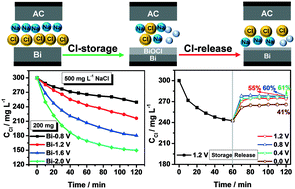
Environ. Sci.: Water Res. Technol., 2020,6, 373-382
https://doi.org/10.1039/C9EW00985J
Enhanced desalination of electrospun activated carbon fibers with controlled pore structures in the electrosorption process
Electrospun activated carbon fibers with high conductivity and favorable pore structures were prepared for enhanced electrosorption of ions.
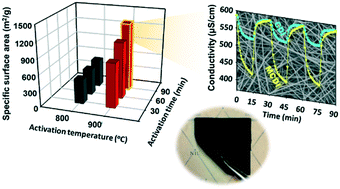
Environ. Sci.: Water Res. Technol., 2020,6, 312-320
https://doi.org/10.1039/C9EW00751B
Revealing the intrinsic differences between static and flow electrode capacitive deionization by introducing semi-flow electrodes
![[rectangle open, vertical]](https://www.rsc.org/images/entities/char_25af.gif) A semi-flow mode FCDI system was first designed and the results indicated that the adsorption capacity was recovered by electrode slurry replacement.
A semi-flow mode FCDI system was first designed and the results indicated that the adsorption capacity was recovered by electrode slurry replacement.
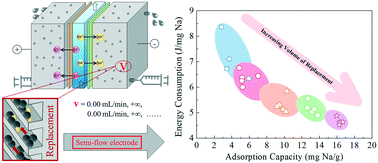
Environ. Sci.: Water Res. Technol., 2020,6, 362-372
https://doi.org/10.1039/C9EW00836E
Energy recovery in capacitive deionization systems with inverted operation characteristics
Capacitive deionization (CDI) operated under inverted mode involves electronic charging and discharge steps with corresponding ion concentration and desalting coupled with simultaneous energy storage.
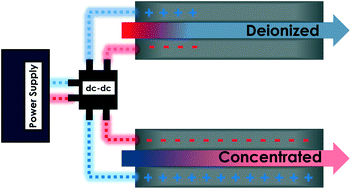
Environ. Sci.: Water Res. Technol., 2020,6, 321-330
https://doi.org/10.1039/C9EW00797K
The fabrication of activated carbon and metal-carbide 2D framework-based asymmetric electrodes for the capacitive deionization of Cr(VI) ions toward industrial wastewater remediation
A new asymmetric pseudocapacitive deionization (CDI) cell was assembled with date seed-derived activated carbon (DSAC) as an anode and MAX (Ti3AlC2) as a cathode for the deionization of the Cr(VI) ions from industrial effluents.
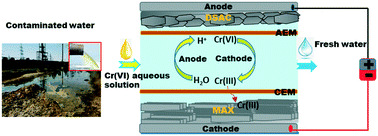
Environ. Sci.: Water Res. Technol., 2020,6, 351-361
https://doi.org/10.1039/C9EW00805E
The pseudo-capacitive deionization behaviour of CuAl-mixed metal oxides
In this work, a laminated CuAl-mixed metal oxide (CuAl-LDO) has been prepared and proposed as an electrode to interact with chloride ions for pseudo-capacitive deionization (P-CDI).
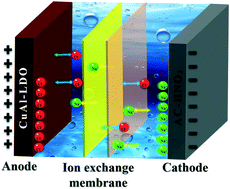
Environ. Sci.: Water Res. Technol., 2020,6, 296-302
https://doi.org/10.1039/C9EW00669A
NH4V4O10/rGO Composite as a high-performance electrode material for hybrid capacitive deionization
Sodium ions in an NH4V4O10/rGO CDI cell can be reversibly inserted into NH4V4O10.
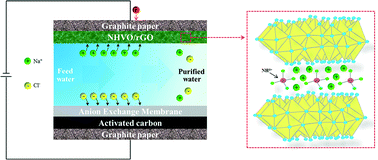
Environ. Sci.: Water Res. Technol., 2020,6, 303-311
https://doi.org/10.1039/C9EW00499H
Effective removal and selective capture of copper from salty solution in flow electrode capacitive deionization
The application of flow-electrode capacitive deionization might provide an alternative for water reclamation and selective recovery of copper.
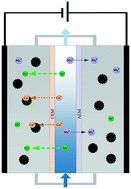
Environ. Sci.: Water Res. Technol., 2020,6, 341-350
https://doi.org/10.1039/C9EW00467J
Porous carbon nanosheets functionalized with Fe3O4 nanoparticles for capacitive removal of heavy metal ions from water
Porous graphitic carbon nanosheets functionalized by ultrafine Fe3O4 NPs and amino-functionalized activated carbon were developed to construct a hybrids capacitive deionization for efficient removal of multiple heavy metal ions in water.
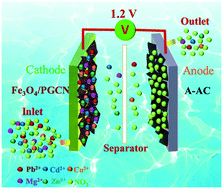
Environ. Sci.: Water Res. Technol., 2020,6, 331-340
https://doi.org/10.1039/C9EW00472F
About this collection
As a promising water desalination technology, capacitive deionisation and electrosorption (CDI&E) has received intensive research interest over the past decades. CDI&E involves interdisciplinary research topics such as materials, engineering, and electrochemistry that aim to better understand how CDI&E works, to explore and facilitate its industrial applications, and to assess its economic and energy consumption.
This collection, Guest Edited by Xia Huang (Tsinghua University), Peng Liang (Tsinghua University), Zhiyong "Jason" Ren, (Princeton University) provides an overview of recent research results and state-of-the-art in this broad field.